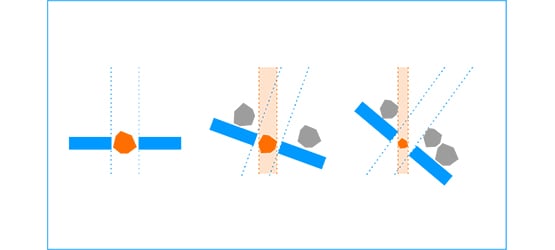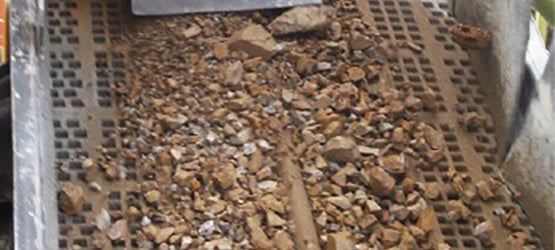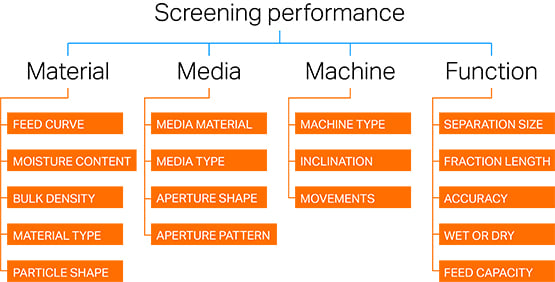A critical look at the arrangement of the feed material on the screen decks can often be revealing. If you notice that the material is not evenly distributed across the width of the screen, then screening performance is almost certainly sub-optimal. This can often happen if material is loaded directly onto the screen without a feedbox. Off-center loading can also occur when different feed materials from different chutes are loaded onto one screen. In both these scenarios, the likely result will be an increase in the carryover of undersize material.
Bed depth also greatly affects screening. You can find a more detailed discussion of bed depth in the The right screen for the job chapter of the Knowledge Hub, but to quickly summarize, the depth should be proportional to the desired separation. The depth decreases as the material travels along the screen deck, of course, so the optimal screen depth is different at the feed and discharge ends of the screen. At the feed end, the upper limit for bed depth is typically 10 times the desired separation, while at the discharge end the upper limit is typically 4 times the desired separation.
If the material bed is too deep, material will not have enough time to stratify properly and there will therefore be excessive carryover of undersize material. Overloading the screen in this way can also result in increased wear to the screening media and shorter life, and can even restrict the movement of the screen, and thus reduce its effectiveness. If the material bed is too shallow, then material will bounce along the screen deck, without sufficient opportunities to fall through an aperture. The end result – excessive undersize material in the overflow – is likely to be the same.




